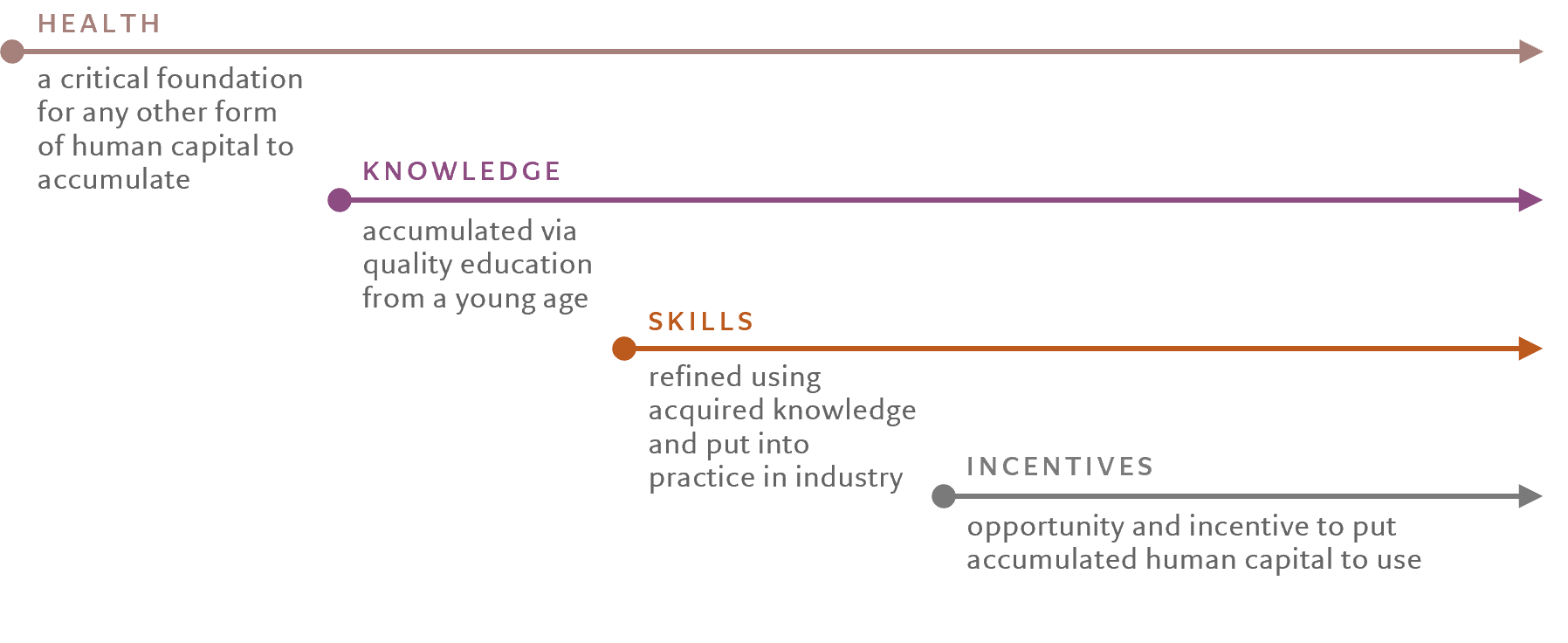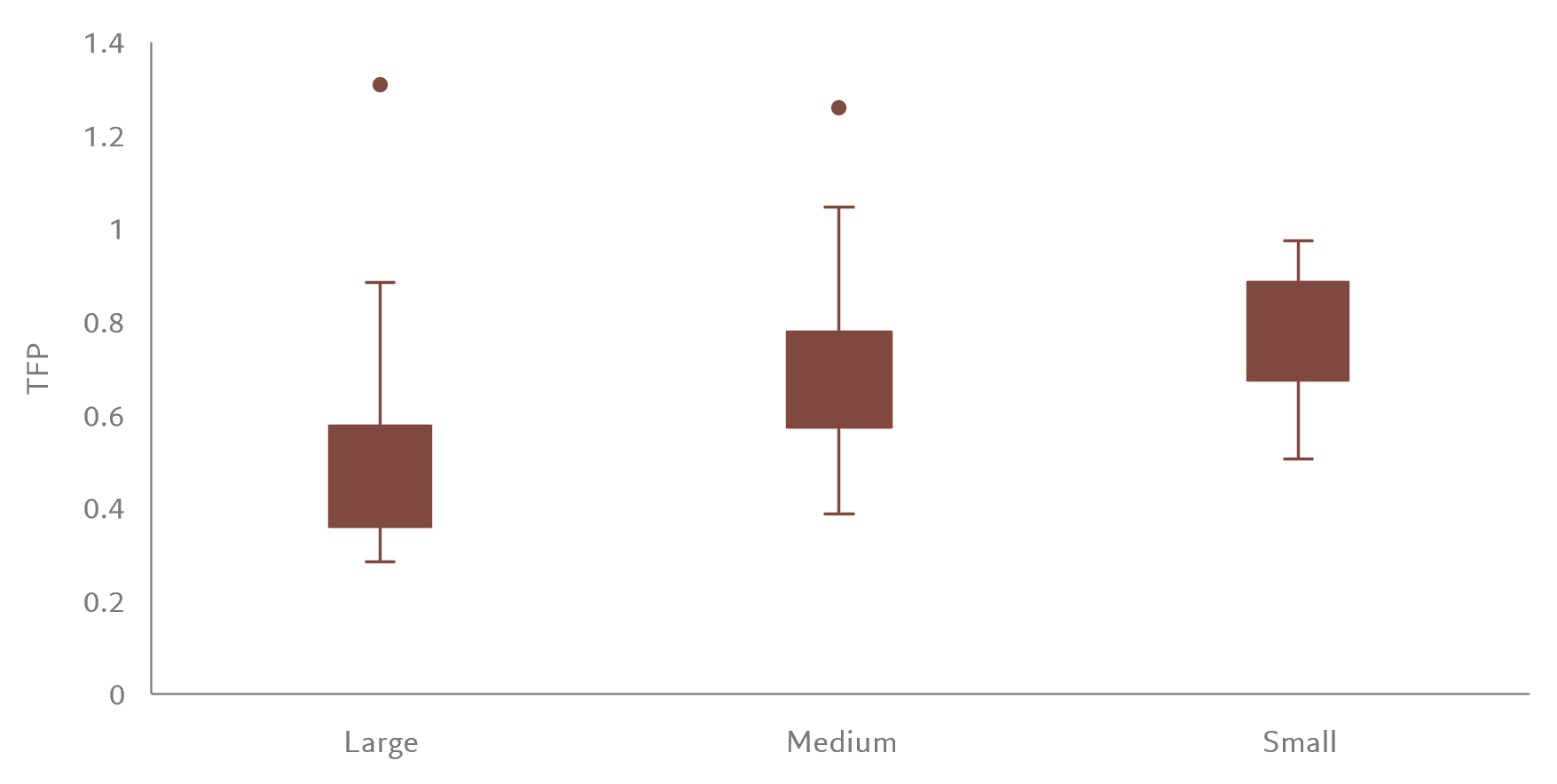Agents of change
A stable state with a leadership committed to improving its population’s welfare is an essential building block. Large scale interventions in both health and education depend on government expenditure and policies. But government action needs to be complemented by the corporate sector. Companies can help build human capital through infrastructure development, financial and digital inclusion and skills development and other.
At Pictet Asset Management, measures of human capital development are used to guide investment managers of our emerging market debt portfolios.
We seek to focus investments in countries that are making the most progress in addressing gaps in human development.
For us as investors, to uncover the best opportunities for return, we identify areas where human capital has the most scope to grow. Gaps are assessed using a set of indicators with defined thresholds where human capital gains can be measured and where enabling corporate sectors can be identified. This allows for regular assessment of sovereign interventions and human capital outcomes, bearing time lags in mind – some interventions have a relatively quick pay-back, others take a number of years. This then becomes the basis of an investible universe of both countries and companies.
Within the sovereign bond market, development gaps are first identified across health, education, skills and incentives. Countries with no significant gaps can be ignored as can those which haven’t made strides in closing their gaps or that have failed to adhere to the principle of doing no significant harm to the environment. Finally, analysis of policies being pursued by the remaining countries can help determine whether they are likely to close their development shortfalls. This involves a mix of both a quantitative and qualitative approaches to assess the strength of policy intention and alignment with UN sustainability goals and policy implementation.
Human capital is a hitherto ignored opportunity for investors, but it has the potential to be a rewarding one.
Angola is a particularly interesting example. On the face of it, it has significant development gaps. But it also has huge potential beyond its vast reservoirs of natural wealth. For one thing, it has one of the highest fertility rates in the world, nearly half its population is under 15 years old, and its government recognises the need to diversify its economy from oil. To meet the UN’s sustainable development goals, it would need to increase spending in education by 8.3 per cent of GDP, health spending by 5.7 per cent of GDP and water and sanitation by 2.1 per cent of GDP. Doing so would give a significant boost to its human capital and thereby help to diversify its economy. It would also open up climate-resilient opportunities, not least in green power and harness the country’s demographic dividend.
But it’s not just a matter of looking at countries. Companies can make a difference by helping unlock human capital, for instance by facilitating financial inclusion. Here, it’s a matter of assessing and then measuring significant development gaps within certain areas such as any activity that credibly fills a development gap in any of the human capital dimensions in financials, telecoms, infrastructure, utilities, health care, education, etc., taking into consideration aspects such as accessibility, affordability and quality of goods and services.
Take finance – the first step is to consider what proportion of a country’s population has access to bank accounts and then at account ownership within individual financial institutions. Is there scope for growth? What are the banks doing to make financial services more widely available? What progress have they been making? A prime candidate for investment would be a retail bank that has a wide reach as a result of a diverse target market, which has technological solutions that can reach remote and underserved geographic locations.
It’s a virtuous cycle. By building human capital, companies reinforce the economic health of the countries in which they operate, which in turn creates more business opportunities and greater revenue for the corporate sector overall. Human capital is a hitherto ignored opportunity for investors – but it has the potential to be a rewarding one.
Amana Shabeer, Pictet Asset Management fixed income sustainability analyst, contributed to this article.






